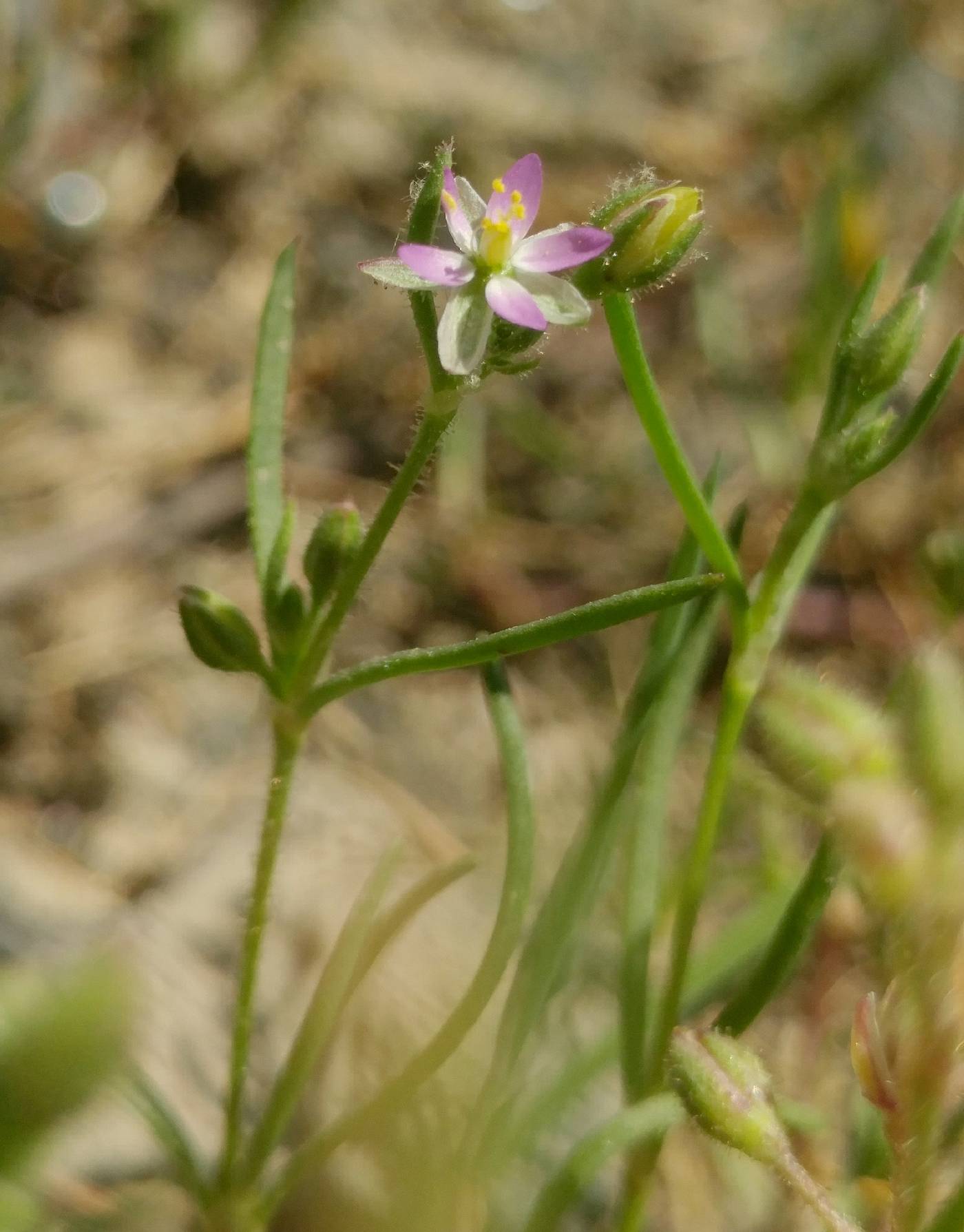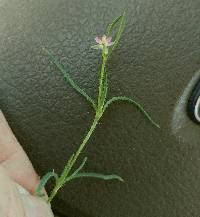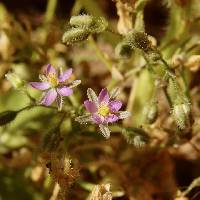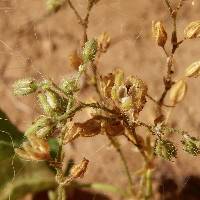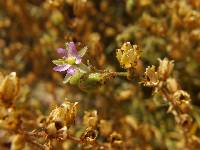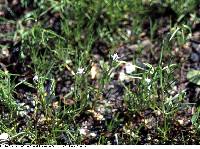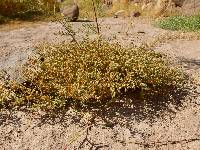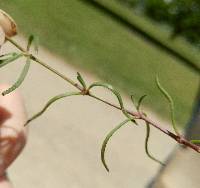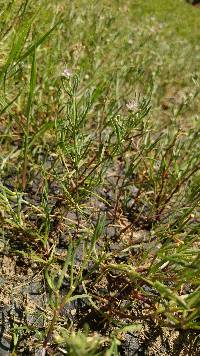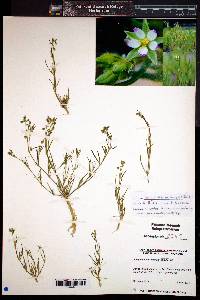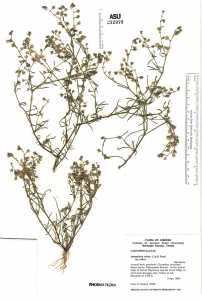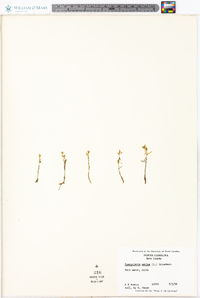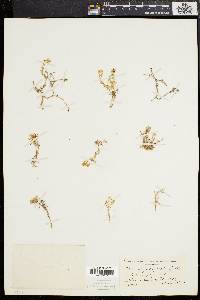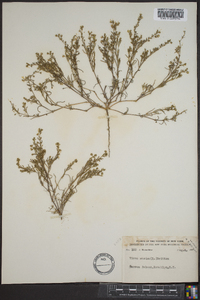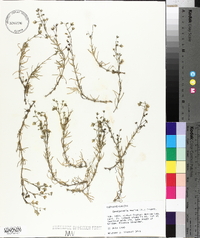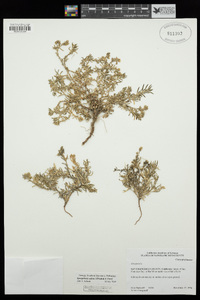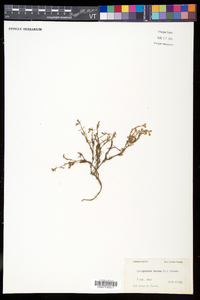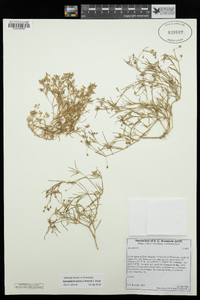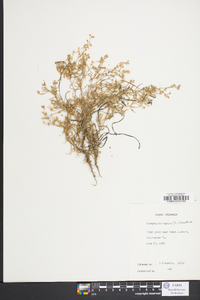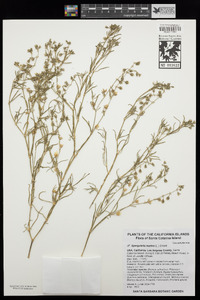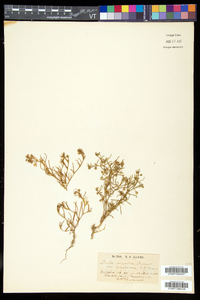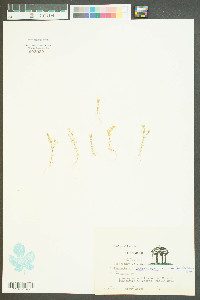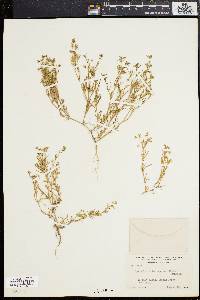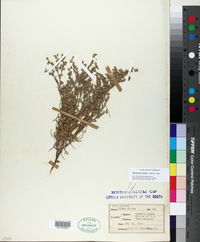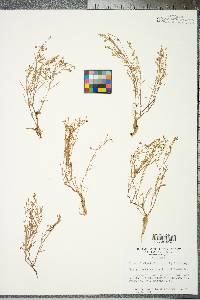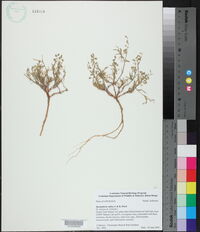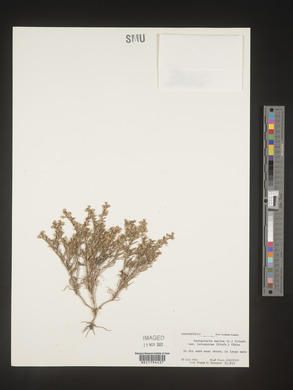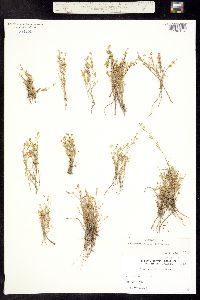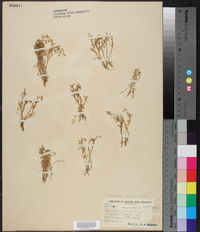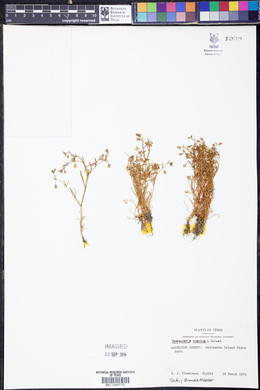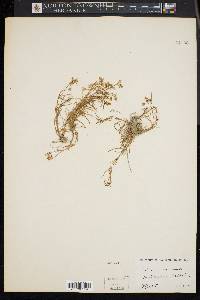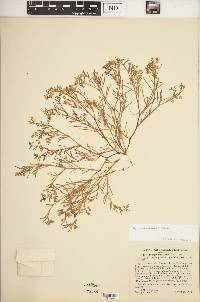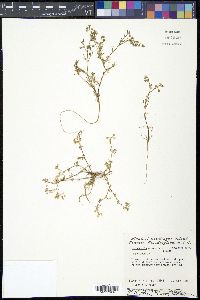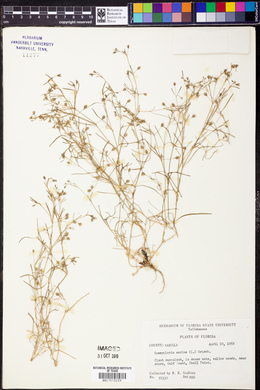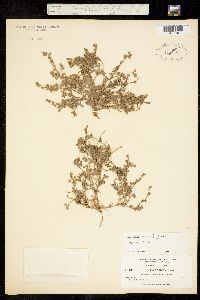
|
|
|
|
Family: Caryophyllaceae
Saltmarsh Sandspurry, more...Saltmarsh Sandspurry, salt sandspurry
[Spergularia alata Wieg., moreSpergularia leiosperma (Kindb.) F. Schmidt, Spergularia marina (L.) Griseb., Spergularia marina var. leiosperma (Kindb.) Guerke, Spergularia marina var. marina (L.) Griseb., Spergularia marina var. simonii O.& I. Deg., Spergularia marina var. tenuis (Greene) R.P. Rossb., Spergularia salina var. salina J. Presl & C. Presl, Spergularia salina var. tenuis (Greene) Jepson, Spergularia sparsiflora (Greene) A. Nels., Spergularia tenuis var. involucrata B.L. Robins., Tissa marina (L.) Britt., Tissa tenuis Greene] |
Plants annual, delicate, 8-25(-30) cm, stipitate-glandular, at least in inflorescence. Taproots ± slender. Stems erect to ascending or prostrate, usually much-branched proximally; main stem 0.6-2(-3) mm diam. proximally. Leaves: stipules inconspicuous, dull white, broadly triangular, 1.2-3.5 mm, longer than wide, apex acute to short-acuminate; blade linear, (0.8-)1.5-4 cm, fleshy, apex blunt to apiculate; axillary leaf clusters usually absent. Cymes simple to 3+-compound or flowers solitary and axillary. Pedicels reflexed and oriented to 1 side in fruit. Flowers: sepals connate 0.5-1 mm proximally, lobes often 3-veined, ovate to elliptic, 2.5-4.5 mm, to 4.8 mm in fruit, margins 0.1-0.5 mm wide, apex acute to rounded; petals white or pink to rosy, ovate to elliptic-oblong, 0.8-1 times as long as sepals; stamens (1-)2-3(-5); styles 0.4-0.7 mm. Capsules greenish to tan, 2.8-6.4 mm, 1-1.5 times as long as sepals. Seeds light brown to reddish brown, with submarginal groove, broadly ovate, ± plump, 0.5-0.7(-0.8) mm, dull, ± smooth, often with gland-tipped papillae (30×); wing usually absent or incomplete. 2n = 18- (Asia), 36 (Europe). Flowering summer-early fall. Mud flats, alkaline fields, sandy river bottoms, sandy coasts, salt marshes, saline highway edges (Great Lakes region); 0-1400 m; introduced and native; St. Pierre and Miquelon; Alta., B.C., Man., N.B., N.W.T., N.S., Ont., P.E.I., Que., Sask.; Ala., Ariz., Calif., Colo., Conn., Del., D.C., Fla., Ga., Idaho, Ill., Iowa, Ky., La., Maine, Md., Mass., Mich., Miss., Mo., Mont., Nebr., Nev., N.H., N.J., N.Mex., N.Y., N.C., N.Dak., Ohio, Okla., Oreg., Pa., R.I., S.C., Tex., Utah, Va., Wash., Wis., Wyo.; Eurasia; almost cosmopolitan via introduction. While Spergularia salina may be native in coastal areas and some inland saline sites in much of the cited range, populations in the Great Lakes region are introduced where, as in S. media, highway and sidewalk salt runoff has created favorable habitats. Variety tenuis has been distinguished from var. salina by some authors as follows: cyme crowded versus lax, sepals 1.6-3.8 mm versus 2.4-5 mm, mature capsules 3-4.4 mm versus 3.6-6.4 mm, respectively. Due to the extreme overlap in morphologic features as well as geographic ranges, var. tenuis is not recognized here. The name Spergularia marina var. leiosperma (Kindberg) Gurke has been applied to plants with smooth seeds but, as pointed out by R. P. Rossbach (1940), separation of plants with smooth versus papillose seeds is not practical. Some authors believe that the correct name for this species is Spergularia marina.
Annual herb with a taproot 10 - 35 cm tall Stem: prostrate or upright, unbranched or much-branched, sometimes glandular-hairy. Leaves: opposite, stalkless, 0.5 - 4 cm long, 0.5 - 1.5 mm wide, linear, bristle-tipped, one-veined, fleshy. Stipules two per node, fused at the base, 2 - 4 mm long, broadly triangular, forming a sheath, scarious (dry, thin, and membranous). Inflorescence: a terminal, widely branched cluster (cyme) of flowers, subtended by reduced bracts. Flowers: pink, white near the base. Stamens two to five. Styles three. Sepals: five, green, 2.5 - 5 mm long, egg-shaped with a blunt tip, scarious-margined (dry, thin, and membranous), glandular-hairy. Petals: five, pink, white near the base, shorter than sepals, oblong egg-shaped to elliptic. Fruit: a dehiscent capsule, opening by three spreading valves, 5 - 6 mm long, egg-shaped. Seeds many, light brown, about 0.5 mm long. Similar species: Spergularia media and S. rubra are similar but differ by having more stamens per flower (six to ten). Flowering: late May to late September Habitat and ecology: Probably introduced from Eurasia, but may have come from natural salty springs in the Midwest. Typically found along highways that are heavily salted in winter. Occurence in the Chicago region: non-native Etymology: Spergularia refers to the genus Spergula (which comes from the Latin word spargo, meaning sow or scatter, referring to the discharge of seeds). The Latin -aria means "pertaining to." Marina means "of the sea." Author: The Morton Arboretum Simple or much-branched annual, erect or prostrate, to 35 cm, glabrous to glandular-puberulent; lvs 5-40 נ0.5-1.5 mm, fleshy, short-mucronate; stipules deltoid, 2-4 mm; sep ovate, 2.5-5 mm, obtuse; pet white or pink, ovate, shorter than the sep; stamens 2-5; fr equaling or surpassing the cal; seed 0.6-0.8 mm, smooth or glandular-papillate, wingless or occasionally with an erose wing to 0.4 mm wide; 2n=36. Native of Eurasia, probably only intr. in Amer.; coastal brackish and saline marshes, and flat and alkaline areas inland; salted highways in O. and Mich.; Que. to B.C., s. to Fla. and Baja Calif. June-Sept. (S. leiosperma; S. salina; Tissa m.) Gleason, Henry A. & Cronquist, Arthur J. 1991. Manual of vascular plants of northeastern United States and adjacent Canada. lxxv + 910 pp. ©The New York Botanical Garden. All rights reserved. Used by permission. From Flora of Indiana (1940) by Charles C. Deam Indiana Coefficient of Conservatism: C = null, non-native Wetland Indicator Status: OBL ...... This taxon arguably is better named Spergularia marina (L.) Bess. as noted by Kirschner et al. (Preslia 79:359. 2007). |
|
|
|

